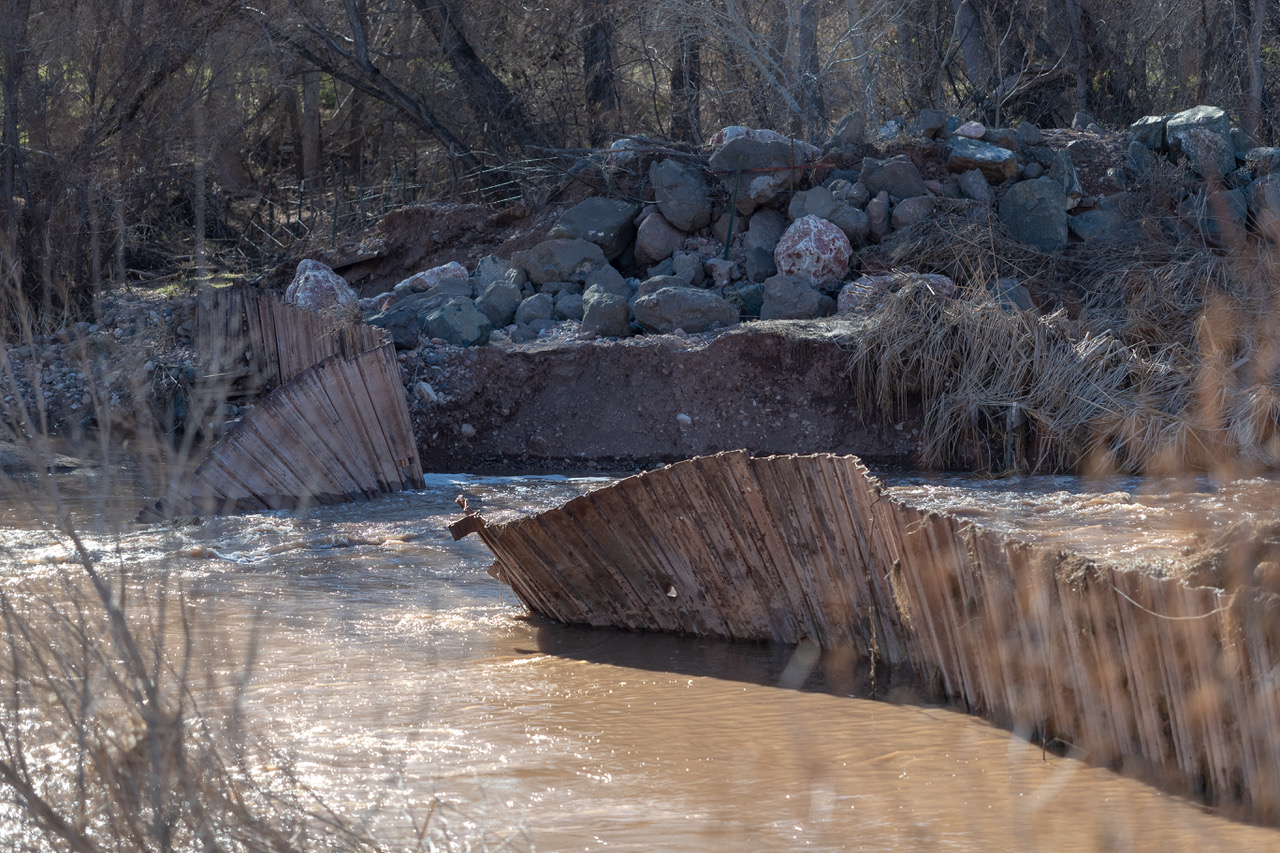
The Clarkdale Dam has held its place in the Verde River for 105 years. Built in 1914 by the United Verde Copper Company, the corrugated steel dam has spent a century diverting water into Peck’s Lake.
When the dam was first built, the water in the lake was being processed for use by the UVCC’s smelter, but even long after the copper mines in Jerome closed down, the dam stayed, separating two parts of the river. It is currently owned and maintained by the copper company Freeport-McMoRan.
On Feb. 15, a powerful storm blew out the dam, when 15,000 cubic feet per second of water flow came rushing down the Verde River. The dam had suffered minor breaches from storms prior, all of which had been repaired, such as in a large flood in 1993.
But this year’s flood was especially strong, punching a large hole in the middle section of the metal dam, allowing the river to pass through unimpeded. And it does not look like the dam will be repaired.
“It blew out in such a way that it’s really going to be difficult to repair,” Clarkdale Mayor Doug Von Gausig said. In addition to being mayor, Von Gausig leads the Verde River Institute, which studies and maintains the Verde River.
According to Von Gausig, river enthusiasts had already seen this dam as worth removing in order to return the river to a more natural state of being, and allow for fish such as the Colorado pikeminnow, a six- foot long fish native only to the American Southwest and listed as vulnerable by the International Union for Conservation of Nature.
“For the past several years, the town of Clarkdale has been working with Freeport- McMoRan, encouraging them to remove the dam and find another way to feed Peck’s lake water,” Von Gausig said. “And they agreed some time ago that they thought that was a good idea and they would work toward that goal. When the dam blew out, it kind of presented them with nature’s way of avoiding the problem.”
“Due to the significant damage that resulted from recent storms to its water diversion structure along the Verde River near Clarkdale, Freeport Minerals Corporation will work with local, state, tribal and federal entities with the goal to remove the diversion structure and establish an alternative point of diversion in order to protect and maintain the company’s long-standing water rights,” Jim Telle, the external communications manager for Freeport-McMoran wrote in an email. “Although Freeport cannot estimate the time required for the appropriate process, the associated physical removal of the diversion structure and establishment of an alternate point of diversion, we look forward to working cooperatively with the various Verde River interests to expedite this project to the extent possible.”
Von Gausig announced plans to remove the dam at a Clarkdale Town Council meeting on Feb. 26 and said that he heard back from Freeport-McMoRan shortly afterwards that they were interested in going ahead with the removal. According to Von Gausig, the normal process of removing the dam would have required an extensive permitting process, but the dam breaking from natural causes could make the process easier and quicker.
Remnants of the dam are still in place and will require some additional removal to fully clear the river. The company still intends to divert some water flow to fill Peck’s Lake, but has not indicated what method it will use to do so, whether via drilling a well, creating a partial dam on some section of the river or pumping the water into the lake.
“The real impact of the dam removal is upstream of the dam, and that occurs where the dam created a pond, essentially, a lake above the dam” Von Gausig said. According to Von Gausig, the removal of the dam has created a completely different natural habitat, as it has changed from a still pond to a riffle habitat of flowing water. Von Gausig said that, based on early water samples, part of the river has a high diversity of insects and other invertebrates as a result of the change, which could allow for more diverse animal life in general. The new habitat could function as a refuge for native fish to thrive in the area.
“That’s the most exciting change that I’ve observed so far,” Von Gausig said. “It just provides all new habitat that wasn’t there before.”
Jon Hecht can be reached at 282-7795 or email jhecht@larsonnewspapers.com